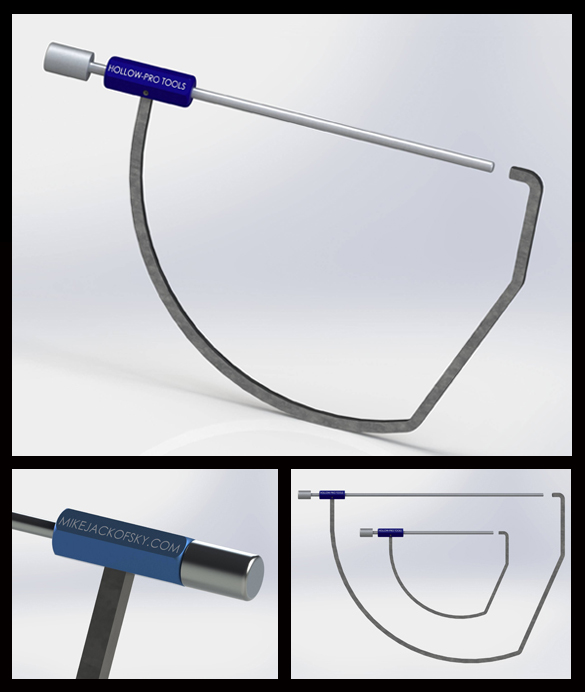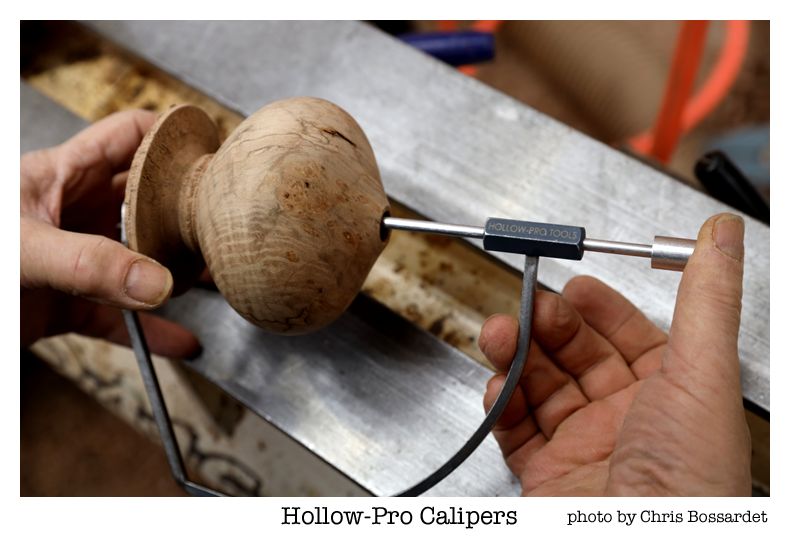
NEW!
HOLLOW-PRO M4 Scrapers now
available in a longer EXTENDED version!
 For situations where you
need a little extra reach, with both
the straight and bent, 1/2" and 5/8" tools.
|
Now Available in Standard and Large Sizes!
Blast
the Wood Out of Small, Medium, and Large Hollow Vessels!


5" Diameter Natural Edge Masur
Birch Hollow Form Turned Using Hollow-Pro Rocket Tools
Rocket Tools at Work


photos by Chris Bossardet
|
HOLLOW-PRO ROCKET
Standard size tools are professional, fast and efficient
hollowing tools for making hollow vessels up to about 7"
high x about 7" diameter. These 8" tools have 3/8" shafts to
allow hollowing through very small, restricted openings. The
tools use replaceable #1 size carbide cutters and are
designed to fit into any large handle with a 3/8" or 1/2"
opening. (Tip: place the screws from these handles on the
side or top of the tools, so the bottom will slide smoothly
on the tool rest)
NEW! HOLLOW-PRO
LARGE ROCKET TOOLS
Blast the wood out of
medium/large size hollow vessels!
 HOLLOW-PRO LARGE ROCKET
tools are now available for making hollow vessels up
to about 10" high and about 10" in
diameter. These 11" tools have 1/2" shafts that facilitate
hollowing through small restricted openings. LARGE
ROCKET tools use #1 carbide cutters and are designed to fit
into any large handle with a 1/2" opening. (Tip: place the
screws from these handles on the side or top of the tools,
so the bottom will slide smoothly on the tool rest.)
The round shafts of these tools can be rotated slightly to make clean "shear" cuts and the bent tool is also very useful for undercutting the openings on larger hollow vessels. Set of one straight and one bent tool includes replaceable Hunter #1 carbide cutters for clean cuts and durability, and a Torx wrench for rotating and replacing the cutters as needed. Notes On Use of Hollow-Pro Rocket Tools The Hollow-Pro 3/8" and 1/2" ROCKET straight tools are very versatile tools that can be used to remove wood quickly and easily from hollow vessels and open bowls. They also work very well for hollowing out boxes. BENT TOOLS: The Hollow-Pro 3/8" and 1/2" ROCKET bent tools were designed to hollow vessels up to about 7" (for the 3/8" tool) and up to about 10" in diameter (for the 1/2" tool), but they are also intended to be used on larger pieces. By using the smaller tools to undercut the first portion of larger vessels, the tool rest is closer, resulting in a cleaner cut and greater control. _______________________________________________________
|
Hollow-Pro High Quality Calipers
Copyright
2012, 2013 Mike Jackofsky -
All Rights Reserved
Website
design by Rick Jackofsky












